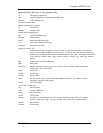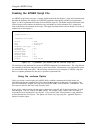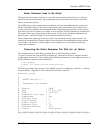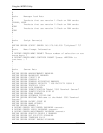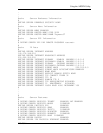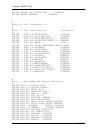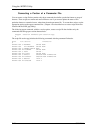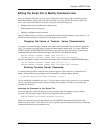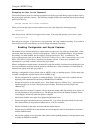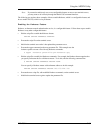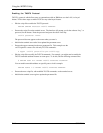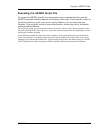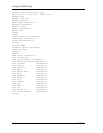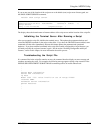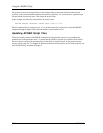
Using the APGEN Utility
893-769-A 3-11
Editing the Script File to Modify Command Lines
Once you create the script file, you may want to change the values in some of the command lines that
define characteristics, features, protocols, and passwords. To do this, edit the file with any ASCII text
editor. This section describes how to modify a script file in the following ways:
• Changing the values of terminal server characteristics
• Entering terminal server passwords
• Enabling configurable and keyed features
After you edit the script, you will have a parameter file tailored to the requirements of your network. You
can then execute the script on terminal servers throughout your network.
Changing the Values of Terminal Server Characteristics
To modify a command that appears without the # symbol, edit the command line to define the appropriate
value. For example, you might want to change the default Internet subnet mask. To do this, disable the
SUBNET MASK AUTOCONFIGURE characteristic, and specify the new subnet mask. By default, the
commands that control these characteristics appear like this for a class B Internet address:
DEFINE SERVER INTERNET SUBNET MASK 255.255.0.0
DEFINE SERVER INTERNET SUBNET MASK AUTOCONFIGURE ENABLED
Edit these commands to include a nondefault subnet mask and to disable the AUTOCONFIGURE feature:
DEFINE SERVER INTERNET SUBNET MASK 255.255.192.0
DEFINE SERVER INTERNET SUBNET MASK AUTOCONFIGURE DISABLED
Entering Terminal Server Passwords
A command which specifies a terminal server password appears in the script file as a comment line by
default. The terminal server privileged password command, for example, appears like this:
# DEFINE SERVER PRIVILEGED PASSWORD <secret>
You can modify this command in two ways. You can replace <secret> with a password, or you can delete
<secret> and require the user to enter a password during script execution. In both cases you delete the
comment line symbol #.
Including the Password in the Script File
To use the script file to define the password, remove the pound sign # and replace <secret> with the
password. The following example changes the privileged password to pswd123:
DEFINE SERVER PRIVILEGED PASSWORD "pswd123"
When you execute the script from the terminal server, the DEFINE command specifies the password
without user intervention. Users with access to the script file can read the password, however, and this may
compromise the security of the terminal server.



